Senufo Hornbill, Setien or Harvest Bird
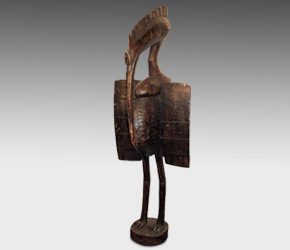 |
|
"The Senufo produce a rich variety of sculptures associated with the poro society. Among the most compelling of Senufo sculptures are large statues representing hornbills"
The Senufo people number approximately 1,000,000 to 1,500,000 and live in Côte d'Ivoire, Ghana, Burkina Faso, and the extreme south of Mali in West Africa. They live principally off the fruits of agriculture and occasionally hunting. Senufo agriculture is typical of the region, including millet, sorghum, maize, rice, yams, and a host of other crops that have been borrowed from cultures throughout the world. Small farm animals such as sheep, goats, chickens, guinea fowl, and dogs are raised. Minimal amounts of hunting and fishing also contribute to the local economy. Despite their size, the Senufo are essentially a people who live off the land; however, in Senufo society, labor is divided between farmers and skilled artisans.
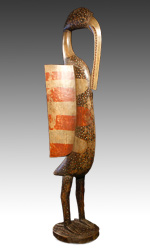 |
|
In addition to a belief in a creator deity, ancestors and nature spirits, a central concept in Senufo religion is a female ancestral spirit called “ancient mother,” the sacred guiding spirit of an association called the poro society. All adult men belong to the poro society, which maintains the continuity of religious and historical traditions, especially through the cult of the ancestors. The poro is the pillar of communal life. Responsible for initiation and training of the young boys, it is aimed at shaping an accomplished, social man who is integrated into society and assumes public responsibilities. The corresponding woman’s association is called the sandogo. It is in charge of divination, and among other duties is responsible for contact with spirits who might be bothered by the activities of the hunt, farming, or of artisans.
The Senufo produce a rich variety of sculptures, mainly associated with the poro society. The sculptors and metal smiths, the artisan groups responsible for making cult objects live on their own in a separate part of the village. The attitude shown toward them by other Senufo is a mixture of fear and respect, owing to their
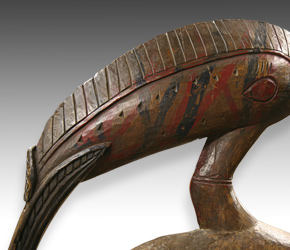 |
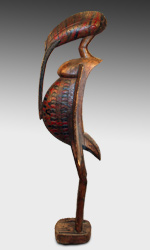 |
privileged relationship with the natural forces that they are capable of channeling in a sculpture. Among the most compelling of Senufo sculptures are large statues representing hornbills. These statues are called porpianong. The Senufo refer to the hornbill as the “master among the birds,” which could serve as a translation of porpianong. Hornbills mate for life and share equally in the raising of their young whom they protect by spreading their wings. Consequently, in sculpture they are almost always depicted in their erect, protective stance. When depicted having their long hooked beaks touching their protruding stomachs they symbolize procreation and fertility and the continuity of life. This type of depiction also is used by diviner’s among the sandogo society to determine farming cycles, planting dates and other issues related to agriculture because (symbolically) the hornbill appears when there will be rain, which in turn, portends a successful harvest.
According to Senufo belief, the hornbill was one of the first living creatures. When shown in the “pregnant” form it represents the male and female components of life, symbolizing the need for both to ensure the continuity of the whole community. The image of the hornbill in this form is associated with intellectual prowess, knowledge the elders hope to impart on young initiates, and the ability to craft a meaningful, fertile future filled with prosperity and fulfillment.
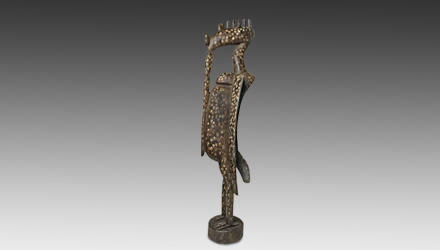
|
|
Download this Article: Senufo Hornbill or Harvest Bird.pdf